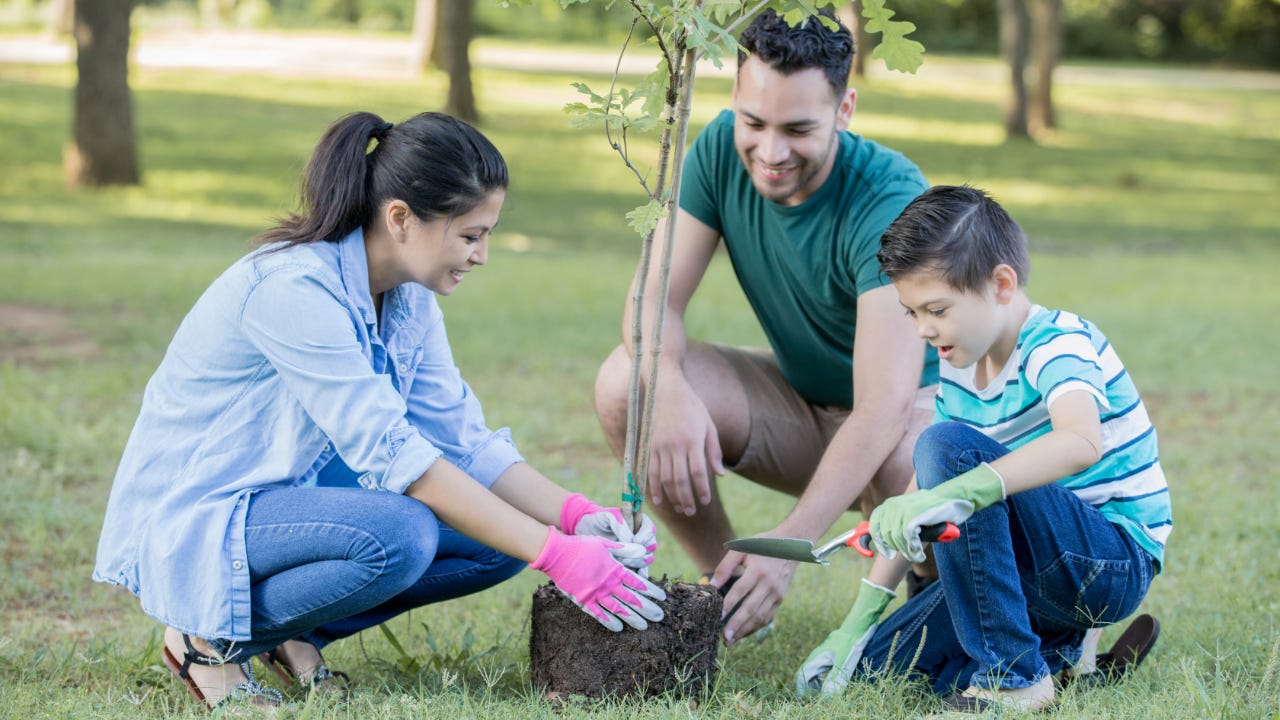What is green banking? 4 ways you can help protect the environment




Key takeaways
- Green banking means being more environmentally conscious in what kind of bank you choose and knowing where the bank invests its money.
- To bank greener, you can choose a bank that prioritizes green initiatives, such as investing in renewable energy.
- One small way you can bank greener is choosing eStatements instead of paper statements.
Many traditional banks do more environmental harm than good by investing and insuring companies that are actively contributing to climate change. But there are banks that prioritize green initiatives, such as investing in renewable energy. And there are personal choices in the way you bank that can make an impact on the environment.
Green banks and green banking practices are a more sustainable alternative, allowing you to help the environment through your banking choices. Below, learn about green banking and get five tips for banking more sustainably.
What is green banking?
According to the United States Environmental Protection Agency (EPA), a green bank is a financing entity that uses capital to pursue clean energy projects that reduce emissions. A more generous definition of green banking could extend to include banks that focus their investments on sustainable initiatives, while still perhaps maintaining investments in other industries that could not be considered “green.”
Green banking is important because it addresses the lack of environmental activism in traditional banking practices. Green banks have the power to fund the projects and initiatives needed to combat climate change, an increasingly urgent fight.
Advantages of eco-friendly banking
Eco-friendly banking isn’t just good for the planet, though that’s certainly a goal. Here are some other benefits of eco-friendly banking:
- Green banking allows consumers to align their finance with their values by investing in environmental initiatives.
- Green banks support their communities financially and through conservation projects.
- Green banks can provide much-needed investment in clean energy products.
- Green banks take on risks traditional banks aren’t willing to take, such as funding new clean energy products and projects.
- Because green banking is a mission-driven industry, these institutions tend to offer transparency when it comes to their investments and initiatives.
4 ways to move to sustainable banking
1. Go paperless
This is one of the easiest ways to get a little green with your banking. Not only does it help the environment by using less paper, it can also reduce clutter around your home and in your mailbox. It also means you’ll get your bank statement as soon as it becomes available.
Paperless can mean e-statements or it could mean a text or email receipt at the ATM too. It’s always a good idea to have proof of your transaction. But that proof doesn’t necessarily have to be a piece of paper.
Also, going paperless may save you money by avoiding paper statement fees. Paper statement fees can generally cost you between $1 or $5 each month.
You can also reduce the usage of paper checks by using an electronic transfer service, like Zelle, to make payments to friends and family.
2. Research your bank’s lending and investment portfolios
When it comes to green banking, one important aspect to consider is where your bank invests its funds. By researching a bank’s investments, you can make informed decisions to avoid supporting financial institutions that may be contributing to environmental harm, such as by financing fossil fuels.
Banks may disclose information about how they invest on their websites or in sustainability reports. Alternatively, you could use a site like BankTrack, which provides detailed information on most banks’ financing initiatives, tracking the involvement of banks in things like coal mines, oil drilling or pipeline construction.
Here are some banks with notable investments you should take note of.
Traditional bank investments:
- Wells Fargo: This major US bank has financed plenty of environmentally degrading projects over the years, including several mines across the world. Plus, in early 2025, the bank abandoned its goal of net-zero emissions by 2050.
- Citibank: Citi has financial ties to coal, oil and gas, and other carbon-emitting industries. It’s also one of the banks involved in financing a controversial steel plant in India.
- JP Morgan Chase: Like several other large US banks, JP Morgan Chase has financed a range of harmful projects, including a Canadian coal mine using the destructive technique of mountaintop removal which has caused serious water pollution.
Green bank investments:
- Amalgamated Bank: At the end of 2023, more than 39% of the bank’s lending activity was dedicated to climate protection.
- Beneficial State Bank: As of 2023, Beneficial State Bank dedicated nearly 40 percent of its total loans to climate protection.
3. Do business with a bank that cares about the environment
Some banks really put an emphasis on being green and protecting the environment. One way to support these efforts is to open an account with an eco-focused bank.
One place to start is by looking into banks that are members of the Global Alliance for Banking on Values (GABV) or that are B Corp certified. Both of these networks require that member institutions meet certain standards for sustainability and social responsibility.
You can also consider the following banks, which have proven track records of supporting green initiatives:
- Limelight Bank is an online bank that has relationships with national solar product providers. It contributes to the funding of solar projects. Note though that it only offers four short-term CDs from six months to three years, all with a $1,000 minimum to open.
- Forbright Bank offers both digital and branch banking and funds a range of sustainable projects, from solar to green building upgrades. The bank offers a strong, high-yield savings account, an interest-bearing checking account and has a few competitive yields on CDs, too.
- Climate First Bank tailors its offerings to eco-conscious consumers, providing dedicated loans for solar and other renewable energy projects. In addition to loans, it offers personal checking and savings accounts.
- Amalgamated Bank reached a major milestone in 2023 with 100% renewable energy use in direct operations. If you want to bank here, you can open a checking and savings account or a certificate of deposit.
- Beneficial State Bank has a green lending program, funding renewable energy, conservation and environmental education. You can open a checking account, money market account or certificate of deposit.
- Aspiration: Aspiration calls itself the climate-friendly banking alternative. It gives users the ability to round up purchases to plant trees, earn rewards by shopping at climate-friendly brands and invest in its sustainable Redwood Fund.
Important to know: Aspiration is a financial technology company, not a bank, so federal deposit insurance works differently. Learn more about how deposit insurance works at third-party fintechs.
4. See if impact investing is an option for your portfolio
According to Investor.gov, environmental, social and governance (ESG) investing means investing in companies committed to one or more of those categories. ESG funds might invest in renewable energy, air quality, conservation, water quality and more. They may also include social and governance factors, like human rights and diversity.
Various brokerages allow you to browse and purchase ESG funds. Fidelity, for example, allows you to search for environmental, social and governance (ESG) exchange-traded funds (ETFs) on its website.
Many Americans are already prioritizing impact in their investing choices. According to a 2024 report from Morgan Stanley, more than half of investors plan to allocate more toward sustainable investments within the next year.
Bottom line
You might be thinking carefully about where you spend your money but are you thinking about where you’re storing it? Whether it’s a bank that’s committed to the environment or an institution that has electronic options to avoid using paper and saving trees, there are a number of ways you can make adjustments to your banking to help the environment.




